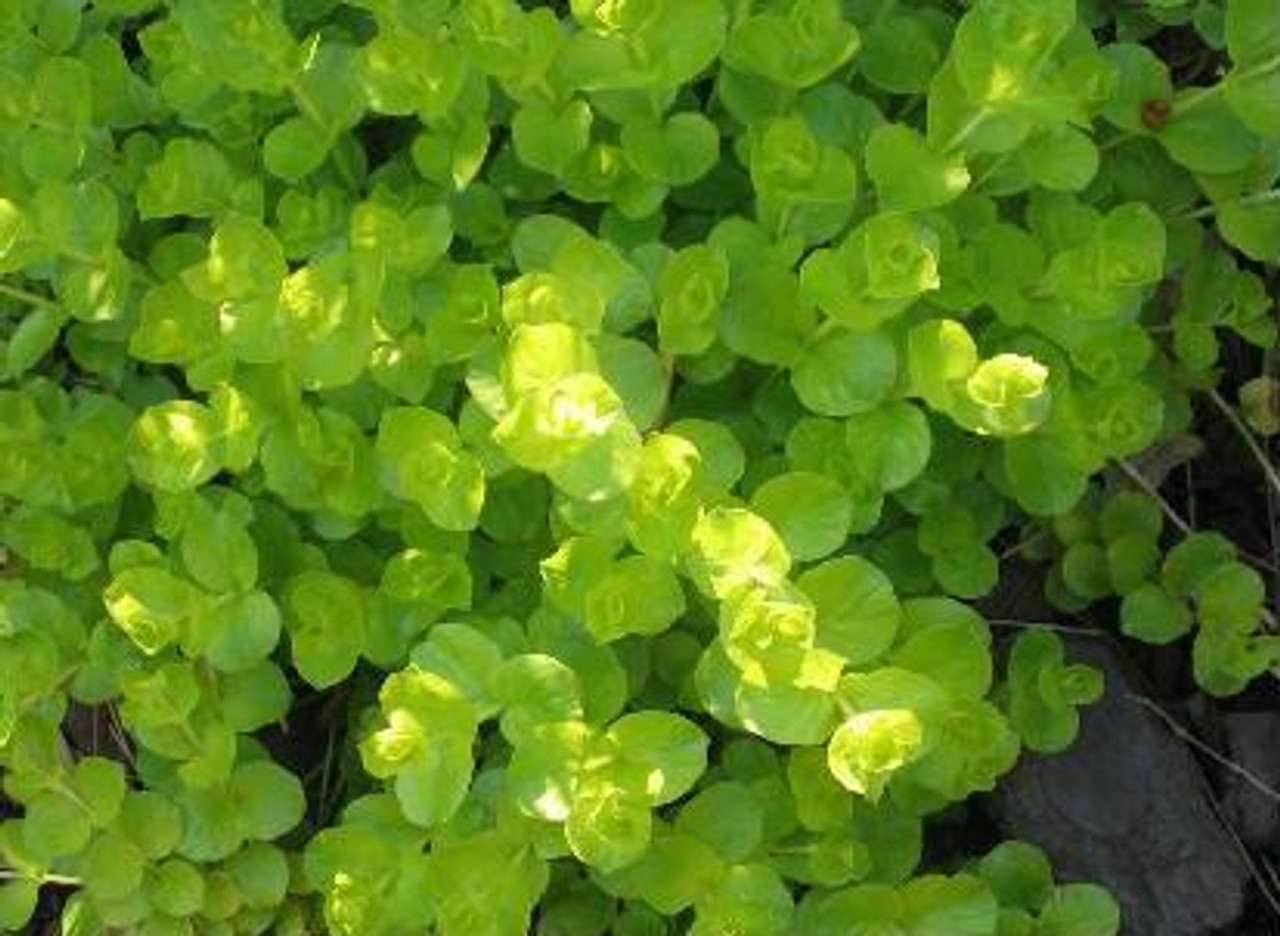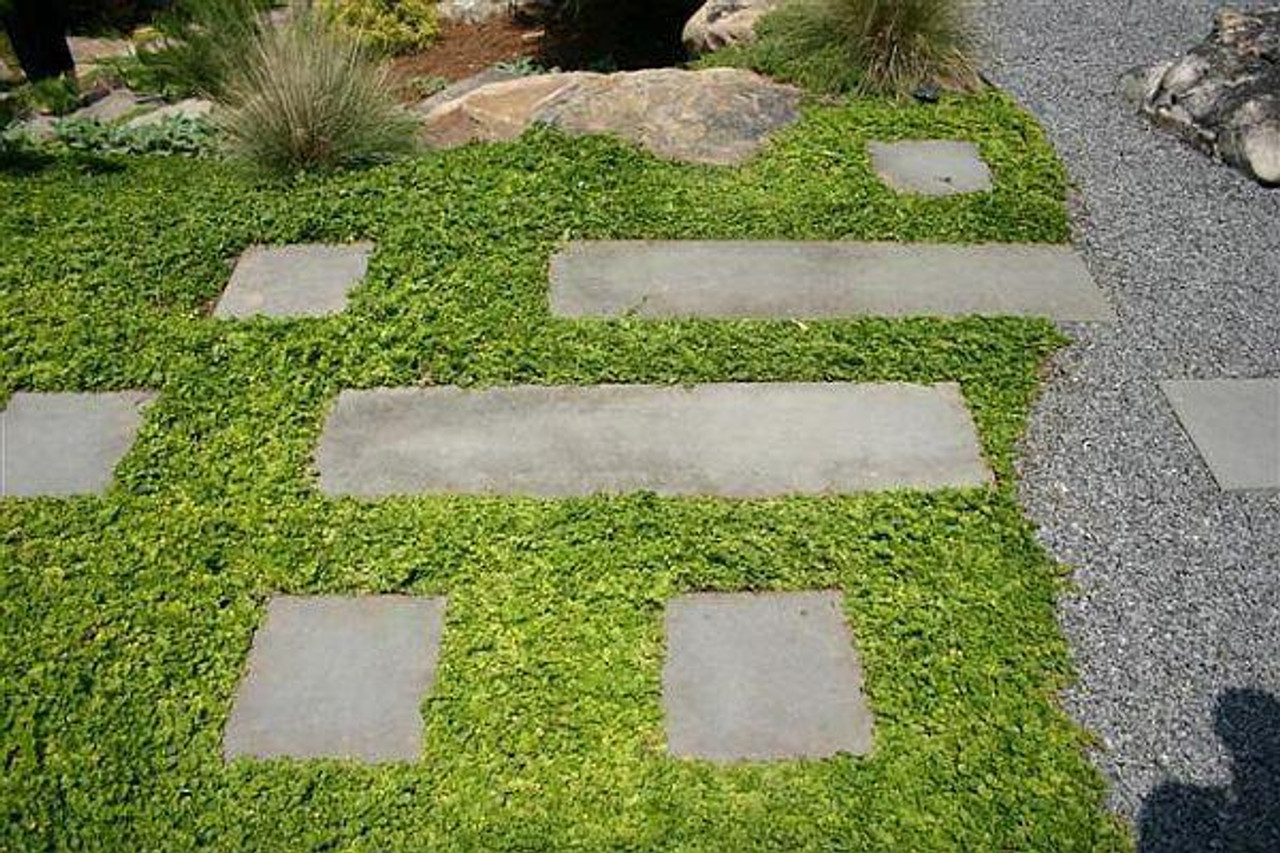Product Description
Lysimachia nummularia 'Aurea'
Common Name: CREEPING JENNY, MONEYWORT and CREEPING CHARLIE.
Zones 3 to 9.
Part to full shade.
Lysimachia nummularia 'Aurea', commonly called Golden Creeping Jenny or Moneywort, is a vigorous, low-growing perennial with bright golden-yellow foliage. It is a popular choice for groundcover, hanging baskets, and even aquariums due to its adaptability and striking color.
- Foliage: Rounded to heart-shaped leaves, about 1 inch long, ranging from lime green to a vibrant golden yellow, depending on sun exposure.
- Flowers: Small, cup-shaped, bright yellow flowers bloom in early to mid-summer, though the foliage is the main attraction.
- Growth Habit: Spreads rapidly via trailing stems that root at the nodes, forming a dense mat.
- Height: 3-6 inches
- Spread: 12-18 inches
- Hardiness Zones: 3-9 (can be invasive in some areas)
- Light: Full sun to part shade (best foliage color in full sun)
- Soil: Moist, well-drained soil. Tolerates wet soils and even shallow water.
Benefits:
- Versatile: Thrives in various settings, including gardens, containers, hanging baskets, and water gardens. Can even be used as an aquarium plant.
- Brightens Shady Areas: Its golden foliage adds a cheerful touch to shady spots in the garden.
- Erosion Control: Its spreading habit helps stabilize soil and prevent erosion on slopes and banks.
- Easy to Grow: Requires minimal care once established.
- Attracts Pollinators: The flowers attract bees and other beneficial insects.
Growing Tips:
- Planting: Space plants 12-18 inches apart for groundcover.
- Watering: Keep the soil consistently moist, especially during hot, dry periods.
- Fertilizing: Not typically needed, but a light application of fertilizer in spring can encourage growth.
- Controlling Spread: To prevent invasiveness, plant in containers or areas where it can be easily managed.
- Overwintering: In colder zones, mulch can help protect the plant over winter.
Things to Note:
- Invasive Potential: The species Lysimachia nummularia can be invasive in some areas. While 'Aurea' is less aggressive, it is still important to monitor its spread.
- Foliage Color: The foliage color is most vibrant in full sun. In shade, the leaves may become more lime green.
If you are looking for a fast-growing, colorful groundcover that can tolerate some shade and moist conditions, Lysimachia nummularia 'Aurea' is an excellent choice. Its bright golden foliage will add a cheerful touch to any landscape.
Eighteen (18) plants in 3.5-inch containers per flat (or tray).
Other Details
The most important part of the plant is its root system. Healthy roots are the foundation of a healthy, vibrant plant. The type of plug container used is based on the specific needs of the plants. Perennials offered as bare root traditionally perform better when planted as bare root.Planted in a specialized mix, potted plants have well established root systems. Top growth stage will vary depending on the current life cycle and time of year when shipped. In Winter and early Spring dormant plants may be shipped. Dormant plants may be planted right away, even before the last frost date.
Most bare root varieties are field grown for at least one season, though Hemerocallis and Hosta are grown for two seasons. The bulk of the soil is removed during the harvesting process and the tops of most varieties are trimmed back to the crown. They are graded, packed in shredded aspen or sphagnum moss and stored in freezers until ready to be shipped.
See our Container Sizes and Bare Root Perennials pages for more information.
Plant information and care is provided in the Overview section, Plant Genus Page and general information is provided in the Planting Care & Guides. Additional questions can be asked on each Plant page.
Plant Spacing: Using the maximum mature spread or width of a plant to guide spacing, ensures space to grow to full size. To fill an area sooner, plant them closer together. Just remember, future thinning or transplanting may be needed.
Water: Keep a close eye on newly planted perennials, especially throughout the first growing year. Most early plant loss is due to too much or too little water!

















